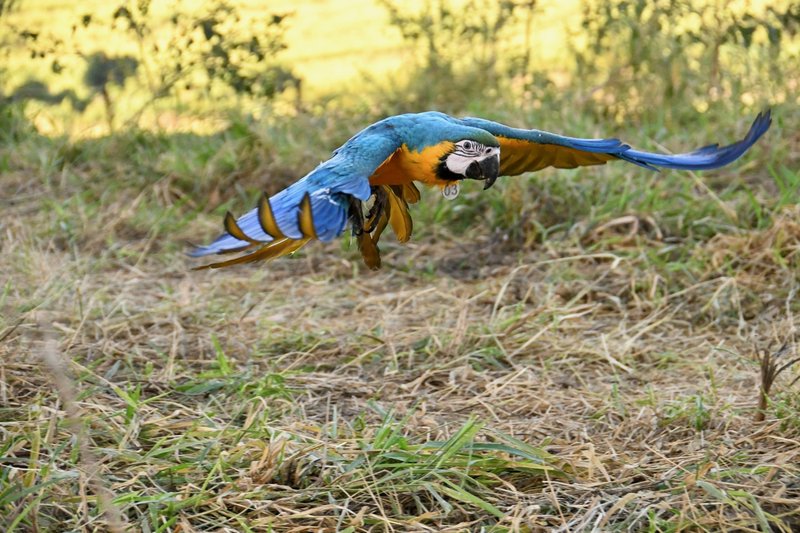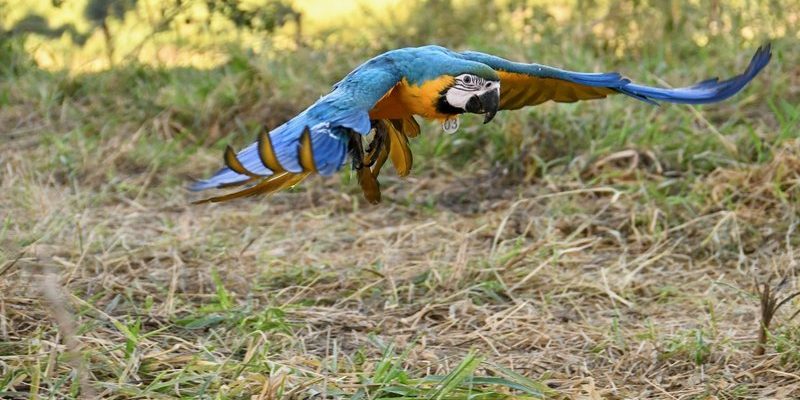
In the wild, macaws are not only masters of flight; they’ve also developed some clever hunting strategies that make them successful foragers. Their intelligence and adaptability set them apart as one of nature’s remarkable marvels. Let’s dive into how these beautiful birds take to the skies and hunt with grace and precision.
A Closer Look at Macaw Anatomy
Before we delve into their flying techniques, it’s vital to understand what makes macaws such adept flyers. The structure of their wings is key. Macaws have long, pointed wings that allow for both agility and powerful bursts of speed. These adaptations are essential for navigating the dense forests of Central and South America, where they reside.
Their strong breast muscles are another factor. When you see a macaw gliding effortlessly, it’s partly due to the impressive muscle power they possess. This muscular build enables them to flap their wings vigorously while maintaining stamina during long flights. It’s not just about looking beautiful; every aspect of their anatomy plays a role in their flight capabilities.
Additionally, their keen eyesight helps them spot both potential predators and food sources from high above. Macaws can detect colors very well, allowing them to find ripe fruits or seeds among the canopy. Honestly, when you combine all these traits, you see why they’re such incredible fliers.
Mastering the Art of Flight
You might be wondering, what does flying look like for a macaw? Imagine a dancer in the air, gracefully swooping and soaring. Macaws often engage in a technique called “flap-gliding.” In this method, they flap their wings for short bursts to gain altitude and then glide on the air currents with their wings outstretched. This technique conserves energy, allowing them to travel long distances without tiring quickly.
During flight, macaws can reach speeds up to 35 miles per hour. They can navigate twists and turns effortlessly, making sharp turns when necessary. This agility comes in handy, especially when evading predators like hawks or large snakes. And let’s not forget their social nature—macaws often fly in groups, which adds a layer of safety in numbers.
What’s even more fascinating is their ability to communicate while flying. Their loud, distinctive calls can be heard echoing through the jungle, even at a distance. Communication during flight helps them stay connected with their mates and flock members, enhancing their survival strategies.
Hunting Techniques: A Clever Approach
When it comes to hunting, macaws are opportunists. They primarily feed on fruits, nuts, and seeds. But how do they hunt? They usually start by perching high in trees, surveying the area. Once they spot a potential food source, they take off, using their powerful wings to reach the spot quickly.
Macaws have a unique approach to cracking open tough nuts. Their strong, curved beaks are specially designed for this task. Let’s think of their beaks as nature’s tools. Just like you would use a hammer for a nail, a macaw uses its beak to crack open hard shells of nuts to get to the nutritious seed inside. This ability not only showcases their hunting skills but also their problem-solving intelligence.
In addition to nuts and seeds, macaws are also known to eat flowers, fruits, and even clay. Yes, clay! They sometimes eat clay from riverbanks, which helps them digest their food better. It’s a fascinating aspect of their diet that reveals their adaptability in the wild.
Social Hunting Behavior
Macaws are social creatures, and their hunting tactics often reflect their communal nature. While foraging, they will typically work together, searching for food in pairs or small groups. This teamwork enhances their chances of finding food. When one sees a good source, the others quickly gather around.
They also engage in playful behavior while hunting. This might include chasing each other through the trees or showcasing their flying skills. It’s not just about survival; it’s also about bonding and establishing social hierarchies. Watching a group of macaws interact can feel like witnessing a well-rehearsed performance—full of energy and enthusiasm!
Moreover, these birds communicate through a variety of calls and body movements during their hunting expeditions, which help them coordinate their actions. It’s a real team effort, making their hunting trips not only successful but also a social event amongst the flock.
Adaptations to Different Environments
Macaws are incredibly adaptable birds, which is evident in their choice of habitats. While they’re primarily found in tropical rainforests, some species have adapted well to savannas and woodlands. These environmental changes have influenced their hunting techniques and flying skills.
For instance, in denser forests, macaws might use their agility to zip through the trees. In more open areas, they may utilize their speed and endurance to cover larger distances when searching for food. This adaptability is crucial for their survival, especially as their habitats face challenges from deforestation and urban development.
When faced with different environments, their ability to adjust their hunting strategies can determine their success. This leads to a fascinating observation: macaws are not just skilled flyers but are also excellent problem solvers, figuring out how to thrive in changing conditions.
The Role of Macaws in Their Ecosystem
Let’s pause for a moment to appreciate the bigger picture. Macaws play a vital role in their ecosystems. By feeding on fruits and seeds, they help with seed dispersal, which is essential for plant growth. When they eat a fruit and travel to a different area, they excrete the seeds, allowing new plants to sprout in various locations.
This cycle is crucial for maintaining the health of the forest. Healthy forests, in turn, provide homes for countless species and help regulate the environment. So, when you think of macaws, picture them not just as beautiful birds but as key players in their habitats.
However, their populations are declining in many regions, often due to habitat loss and hunting. This highlights the importance of conservation efforts to protect these incredible birds and the roles they play in the ecosystem.
As we wrap up our journey through the unique flying and hunting techniques of the macaw, it’s clear these birds are much more than colorful creatures. They combine grace, intelligence, and social bonding in a way that’s quite remarkable. From their powerful flight and clever hunting to their ecological significance, macaws embody the beauty and complexity of nature.
Honestly, every time you see a macaw soaring against the sky, consider how much goes into that simple act of flying. It’s a blend of biology, skill, and instinct that showcases the wonders of the natural world. If we can appreciate and protect these birds, we can ensure they continue to thrive in their environments for generations to come.

